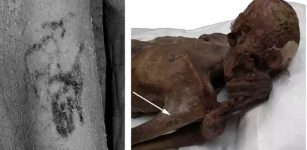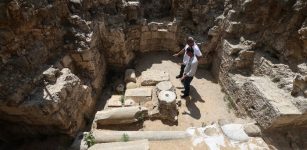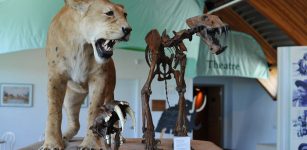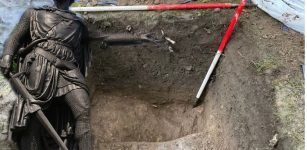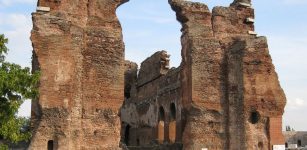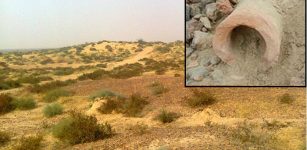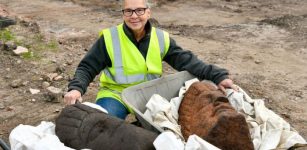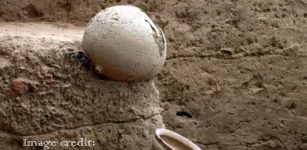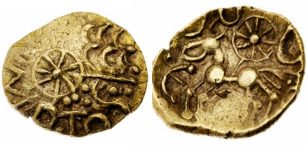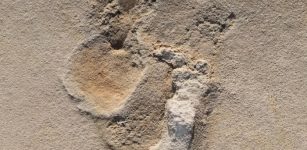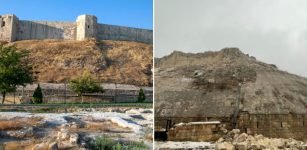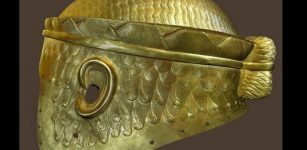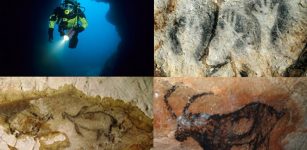Christian Church And Large House Unearthed In Ancient Laodicea, A Major Hub Of Christianity
Conny Waters - AncientPages.com - A 20-room peristyle (an open interior space surrounded by columns) with a church inside has been discovered during the excavation and restoration works in the ancient city of Laodicea, in southwestern Turkey.
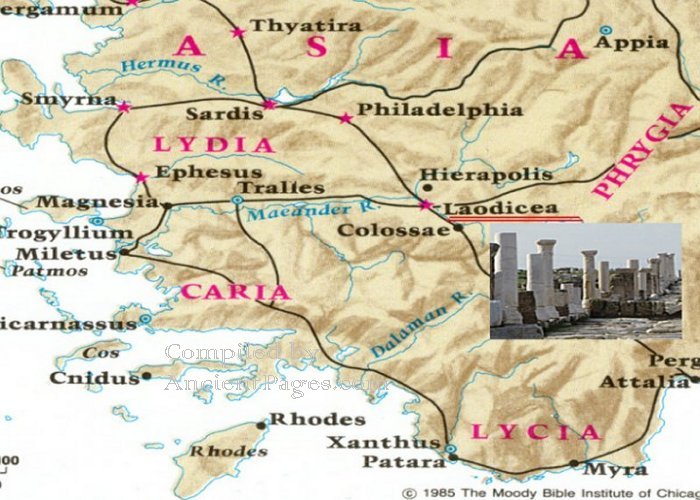
Laodicea – one of Asia Minor’s most flourishing cities – was built upon seven hills. The city minted coinage, some of which have inscriptions showing evidence of the worship of the pagan deity Zeus and of the emperors.
Dated back to 5,500 BC, Laodicea was the largest city in Anatolia after Ephesus, and home to one of the Seven Churches of Asia mentioned in the Bible, and a major hub of Christianity.
So far, a church, theater, and two streets called Syria and Stadium with their columns have been unearthed. Other important structures uncovered during one-year excavation, include the 1,750-year-old travertine blocks with frescoes, which were destroyed in the earthquake that occurred in 494 A.D., a three-meter-long statue of the 1,906-year-old Roman Emperor Marcus Ulpius Nerva Trajan, and the sacred agora.
Also, three graffiti engraved on a marble block, estimated to be 1,500 years old, have been found, writes Hurriyet Daily News.
Speaking to the state-run Anadolu Agency, Celal Şimşek of Pamukkale University said that works have been continuing to revive the Hellenistic era’s 2,200-year-old theater, which was found in the recent years in the west, and the peristyle with the church inside.
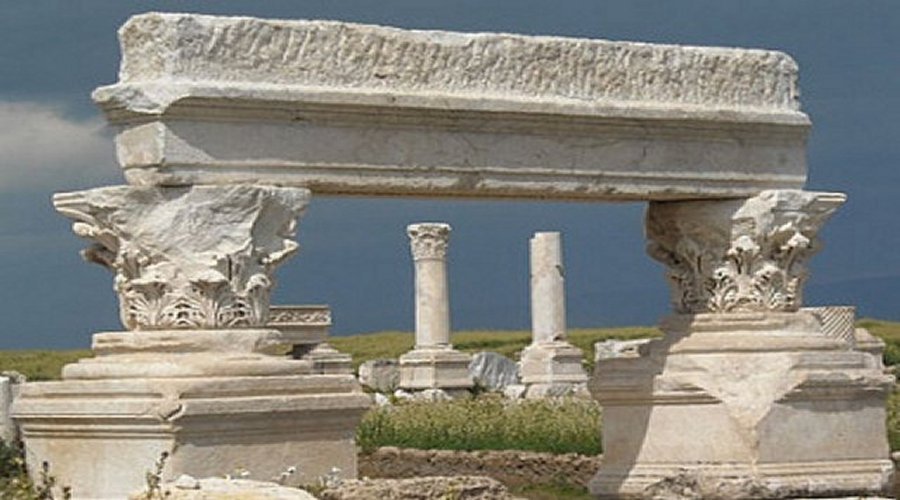 Laodicea ruins. Image credit: AA
Laodicea ruins. Image credit: AA
Şimşek stated that the house, which is estimated to be about 2,000 years old and built on an area of 2,000 square meters, is located in a very interesting place.
“Here, we know that the house was used as of the first century A.D. and that the main planning system of the Roman Empire period continued intact until the seventh century A.D. We obtained interesting results in our works in the house. We saw in the house the fault lines of the earthquakes that destroyed Laodicea over the years. We are working here by protecting these fault lines.”
During the spread of Christianity, the first believers had secretly transformed some parts of this large house into a place of worship, explained Şimşek.
See also:
2,000-Year-Old Historical Tombs Unearthed In Close Vicinity To Ancient City Of Laodicea
“The hall in the west was organized for men and the one in the east for women and a place of worship was made here in east hall," explained Şimşek adding that in the middle of the house, there is a hall with 18 columns. In this house, the archaeologists found baths, shelters, and other sections that were used as business places. The direction of the secret church in the house was facing north,” Şimşek added.
On the walls of the eastern hall, which was converted into a church, the team found rich marble coverings and the sacred items used by the first Christians, showing how believers of Christianity worshiped here.
“It is the only example in the regard that this place was used as both a home and a business place and is adjacent to the theater," Şimşek said.
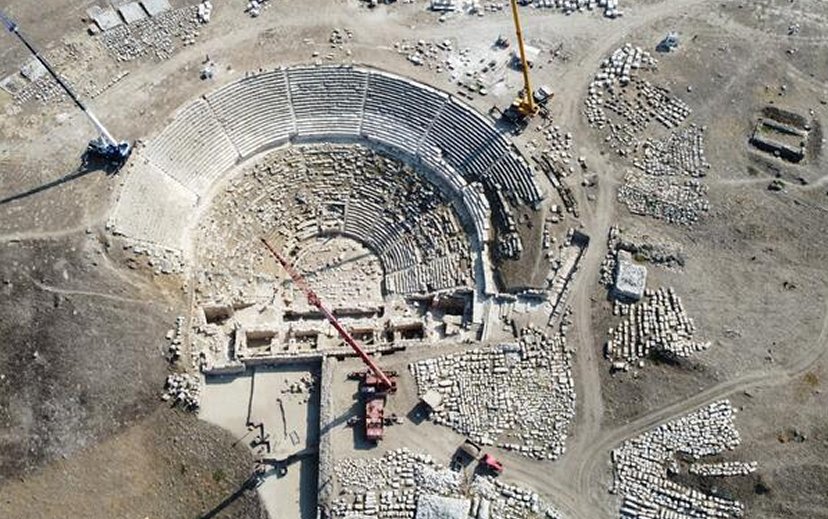 Ruins of the Western Theater built 2,200 years ago in the ancient city of Laodicea. Image credit: AA
Ruins of the Western Theater built 2,200 years ago in the ancient city of Laodicea. Image credit: AA
“We think that the Laodicea Church was built after Christianity was made free, and the high-ranking clergy there probably lived in this house, but we have not yet made a clear determination regarding this.”
“This house with the church is very important in terms of reaching data on how Christianity spread in Laodicea since the middle of the first century A.D.,” he added.
According to first-century Greek historian Strabo, Laodicea was also home to a well-known medical school. It was a wealthy town, known as a strategic banking center. Wealth was used to pay for the reconstruction of the city after a devastating earthquake in A.D. 60, rejecting offers of financial aid from Rome. Another fame of the city was related to the soft, black wool and among the ancient medicine particularly an eye salve was widely known.
Remains from the Hellenistic and Roman periods include two theaters, a stadium and a nymphaeum, a monumental fountain that continued in use into the Byzantine period (fourth–seventh centuries) when it was walled off and converted into a Christian structure.
The city often suffered from earthquakes. It was completely destroyed when an earthquake occurred during the reign of Emperor Nero. The inhabitants were so wealthy that they declined Roman assistance to rebuild the city and instead opted to quickly rebuild it at their own expense.
Written by Conny Waters - AncientPages.com Staff Writer

